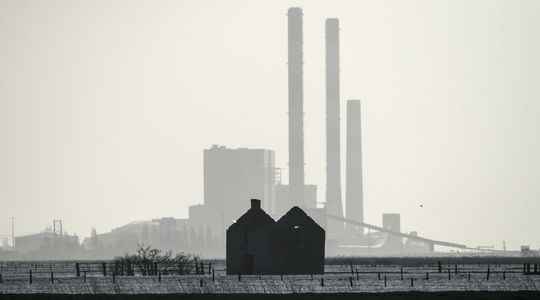It’s a new heat spike. An umpteenth this summer, one might say. France faces this Wednesday August 3 the hottest day of the third heat wave recorded since June 2022, with temperatures which could reach up to 40 ° C in the New Aquitaine region and a drought more marked each day. In this context, Météo-France has placed 26 departments on heat wave orange alert.
This heat only reinforces the dryness. July 2022 is “the second driest month of all months combined” in France since the start of measurements, in 1958-1959, with a cumulative aggregate rainfall of 9.7 millimeters, i.e. a rainfall deficit of around 84 % compared to normal, according to Météo-France. In addition, “we have been in a situation of record drought for soil humidity since July 17 at the national level”, indicates to AFP Jean-Michel Soubeyroux, climatologist at Météo-France. Metropolitan France is now entirely hit by drought, after the passage of Paris and its small crown under “vigilance”, Tuesday August 2, by the prefecture of Ile-de-France.
The water is – but until when? – an abundant natural resource in France. With withdrawals totaling around 31 billion m3, water needs seem to be covered on these time and space scales. However, the greatest water withdrawals take place in summer when the availability of the resource is lowest, which can locally cause strong tensions on this resource, as well as temporary shortages. As specified by the Ministry of Ecological Transition in its data and statistics for climate change, energy, the environment, housing and transport, in mainland France, the impact of water use is greater in the summer period (June to August ), during which 60% of water consumption takes place, while only 15% of the annual volume of fresh water flows on the territory (average 2008-2018).
A large amount of water needed to cool the power plants
An average volume of 210 billion m3 is renewed year after year in metropolitan France, brought in both by precipitation and by rivers arriving from neighboring territories. Fresh water, which is found in surface water (rivers, lakes, canals, reservoirs, etc.) and in underground water tables, is used for domestic (drinking water) and economic (agriculture, industry) purposes. , leisure, power plant cooling).
If you are not viewing the infographic, Click here.
More than 80% of the volume of fresh water withdrawn is drawn from surface water, given the quantities needed to cool power stations and supply canals. Disregarding these two uses, freshwater withdrawals globally mobilize as much groundwater as surface water.
Agriculture, the main water-consuming activity
On average, between 2008 and 2018, the annual volume of water consumed – i.e. the part of the water withdrawn that is not returned to aquatic environments – is estimated at 5.3 billion m3 in metropolitan France (i.e. approximately 20% of the water withdrawn, excluding canal supply), which represents 82 m3/inhabitant. Agriculture is the leading water-consuming activity with 45% of the total, ahead of cooling power plants (31%), drinking water (21%) and industrial uses (4%).
The geographical distribution of freshwater withdrawals varies according to use, recalls the Ministry of Ecological Transition in its 2021 environmental report for France. The water consumed is mainly attributed to agriculture in the Adour-Garonne basins (78% of the total water consumed) and Loire-Bretagne (55%), to drinking water in Artois-Picardie (62%) and in Seine-Normandy (56%), and electricity production in Rhine-Meuse (58%) and Rhône-Mediterranean (46%). A very large part of the volume of fresh water withdrawn for cooling power plants is concentrated on a limited number of sites.
With regard to households, says the Water Information Center, domestic water consumption has gone from 106 liters per day and per inhabitant in France in 1975, to 165 liters per day and per inhabitant in 2004 and to 148 liters per day today, according to the observatory of public services in water and sanitation (SISPEA). To this figure must be added collective uses: schools, hospitals, street washing, watering of green spaces, uses in the context of work… According to INSEE, a French household with an average of 2.5 people uses 329 liters of water per day or, overall, an annual use of 120 cubic meters. About 93% of the water used at home is dedicated to hygiene and cleaning (bathrooms, showers, toilets, laundry, dishes, etc.) compared to 7% for food.
If you are not viewing the infographic, Click here.
The drought forced the French to reduce their water consumption. And the situation should not improve in the coming weeks. “We don’t see an immediate way out of this drought situation. (…) It would take a month of excess rainfall before a normal situation could return”, warns Jean-Michel Soubeyroux.
